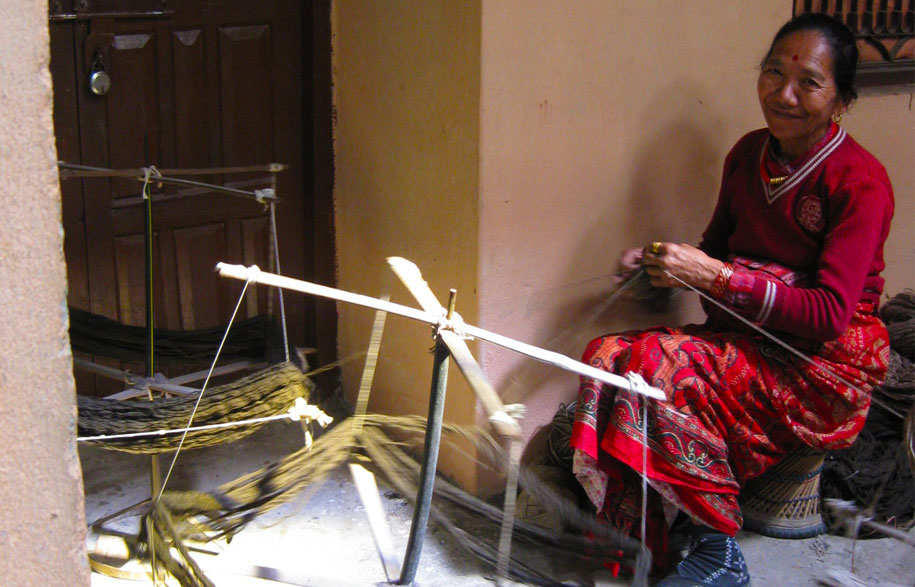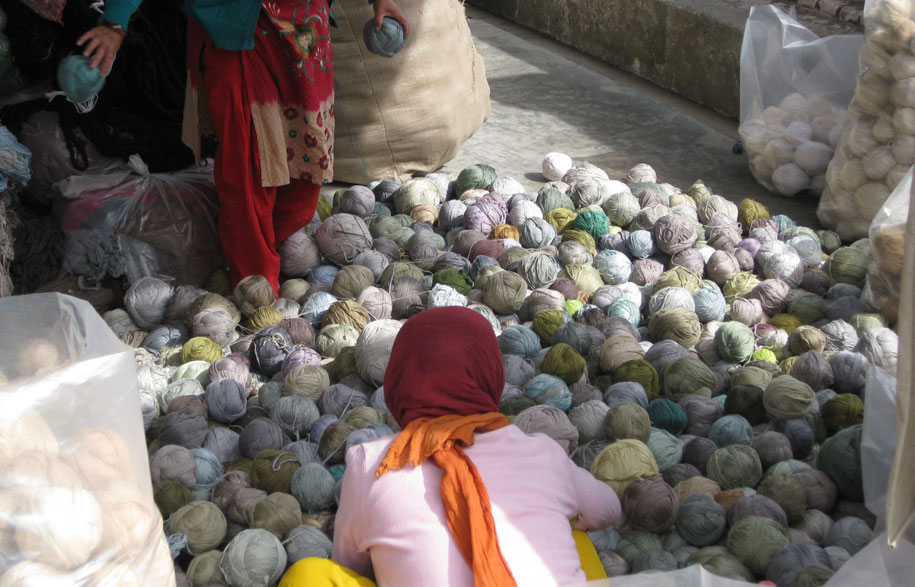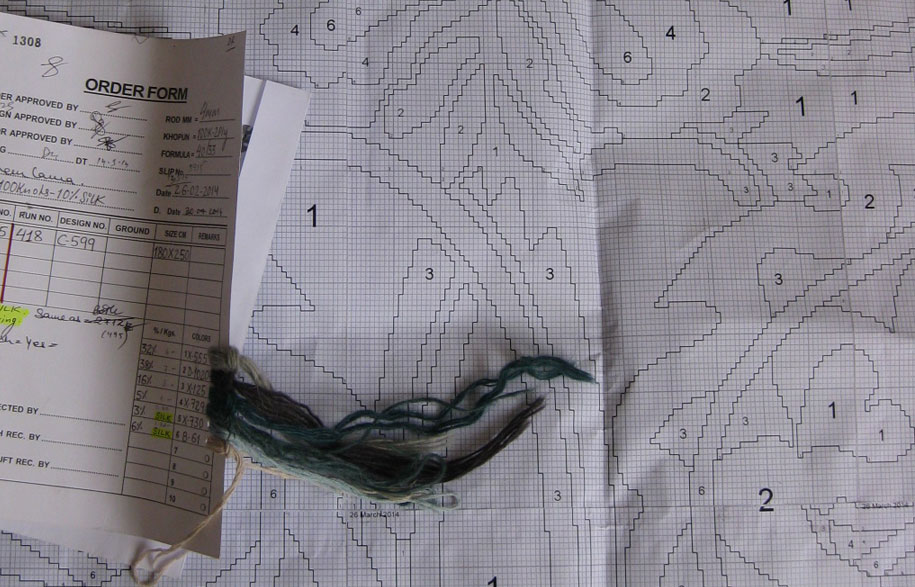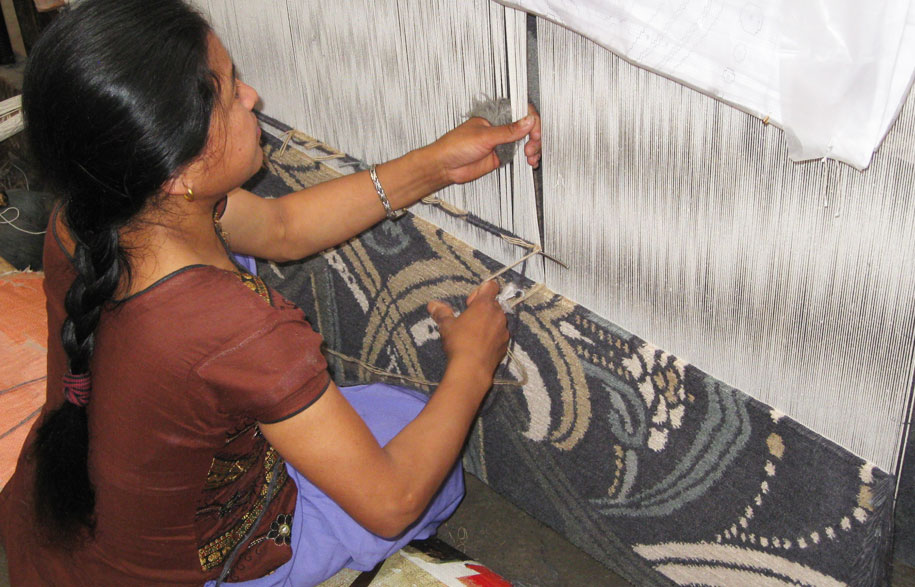For her second visit since 2008, Pielli spent a whirlwind three days in Kathmandu and the nearby weavers workshops. The main purpose, as she says is, “to develop a new collection and understand some of the techniques and artisanship better.”

This is particularly the case with some of the new collections, which employ hemp and a technique called ‘arbrash’. This involves uneven dying – rather than the usual pressure dying which is even, this is unevenly applied to the yarn for a greater variety in colour density and pattern.

Pielli comments “you get a lovely transition of colour and texture, much more organic and textural – however it’s different every time you dye it. So it’s important to have an understanding of the technique and its limitations.”

Visiting the weavers also reinforces how meticulous and time consuming the processes are: “They allow so much time”, observes Pielli, “the time it takes to produce a hand knotted (four-five months) rug vs hand tufted (six-eight weeks), a weaver will weave two and a half square metres a month. It’s amazing to watch the weavers because they’re incredibly skilled – to watch them make something tangible and beautiful which lasts forever.”

And it is also remarkable to see how the designs for the rugs translate from digital to physical realisation – “The design process may be more technical and modern but the manufacturing process is very similar [to how it has been done historically]. You might have all this amazing technology but the technique is still that one. No modern substitutes have ever achieved the same quality or beauty.”

However beyond the specific purpose of this trip, travelling to a country such as Nepal is an enormously stimulating experience, a crucial source of creativity for a designer.

Pielli remarks that “Anytime I travel I tend to absorb things – it’s always nice to visit other places and see completely different colour, how they all paint the facades of their homes different colours and there’s prayer flags everywhere. They’re incredibly positive, friendly people.”
Designer Rugs
designerrugs.com.au

